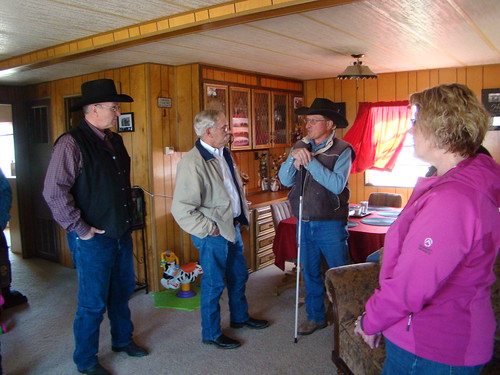
This post is part of a disaster assistance program feature series on the USDA blog. Check back every Wednesday as we showcase stories and news from USDA’s Farm Service Agency.
Richard and Susan Rausch lost nearly 70 percent of their cow-calf operation when Winter Storm Atlas dumped three feet of snow on the western part of South Dakota, killing thousands of cattle across the region. The Rausch’s 300-head of cattle dwindled down to about 90.
“You just can't put into words what the devastation was like following the blizzard," said Richard. "The roads were closed from snow drifts, but once we were able to get out with the tractor, there was dead livestock wherever you went. Our neighbor's livestock was found dead in our yard and our cattle took cover in rough country at the start of the blizzard and they ended up drifting five to six miles away.”
The Rauschs are one of hundreds of farmers who suffered major losses during the unseasonably early blizzard last October, but a lack of a Farm Bill left them without any recovery assistance from the U.S. Department of Agriculture.
“A lot of ranchers decided to try to make it through the winter with the livestock they had left and wait and see if the Farm Bill would help them,” said Richard.
That help wasn’t far away. Farm and Foreign Agriculture Undersecretary Michael Scuse met with the Rausch family to ensure them and other producers that the 2014 Farm Bill would soon be able to help.
Help came just a few months later when the 2014 Farm Bill passed. Within 60 days, sign-up for disaster assistance opened and within the first week more than 10,000 producers filed into Farm Service Agency county offices to submit applications.
The Rausch family visited the Pennington County FSA office on April 30, to sign up for the Livestock Indemnity Program. The program provides compensation for livestock death losses in excess of normal mortality caused by adverse weather conditions. They also signed up for the Livestock Forage Program (LFP) that will compensate them for grazing losses caused by drought and they enrolled in the Emergency Assistance for Livestock, Honeybees and Farm-Raised Fish Program that compensates producers who have suffered losses because of disease, severe weather, blizzards and wildfires. The payments will help the Rausch family gradually rebuild their cattle herd, make repairs and help with operating expenses.
"We already have disaster assistance sign-up appointments booked up until July," said Jiggs O'Connell, Pennington County executive director. "Disaster program sign-up has been a busy time for us, but it's nothing compared to what producers went through during the Atlas blizzard."
"We plan to keep purchasing cattle through the fall," said Richard. "I believe it will take us two to three years to rebuild our herd. It won't happen overnight."
Since disaster assistance sign-up began on April 15, USDA has received over 13,000 applications. As of April 24, USDA has paid more than $4.5 million to help American farmers, ranchers and their families devastated by severe losses. Producers impacted by drought, snowstorms and other unforeseen weather events should contact their FSA county office to make an appointment and learn if they are eligible for disaster assistance.
